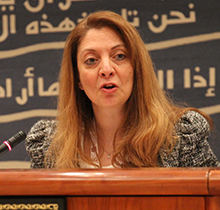In a nutshell
To help address the needs of the Syrian refugees, Jordan has received foreign aid from multiple sources – which has been channelled to help offset the budget deficit, to finance public projects and to support country systems and services nationwide.
The increase in demand for public services by refugees, in particular education and health, has resulted in the Jordanian government increasing the provision of those services.
Jordan’s experience suggests that providing legal work opportunities to refugees may be compatible with maintaining work opportunities for natives as well.
Forced displacement is a global challenge. The number of displaced people rose from 43 million to 69 million between 2007 and 2017. The highest growth was primarily due to the Syrian conflict in 2011. Over 6.3 million Syrians have since fled to neighbouring countries and beyond (UNHCR, 2018). This humanitarian crisis has generated public sympathy as well as concern about the implications of such a massive flow of people.
Jordan, which shares a border with Syria, has experienced a substantial influx of Syrians, with 1.3 million Syrians living in Jordan compared to a total population of 6.6 million Jordanians in 2015 (Department of Statistics, 2015). The impact of such a massive influx of people on members of the host community, in particular on their labour market outcomes, is a subject of great importance and debate.
In a recent study published in the Journal of Development Economics, we empirically investigate the impact of the Syrian refugee influx on labour market outcomes in Jordan, which is a particularly interesting case since, until recently, Syrians were not (officially) allowed to work.
Due to the Jordan Compact between the European Union (EU) and Jordan in 2016, which included humanitarian aid and macro-financial assistance as well as trade concessions by the EU, the Jordanian government allowed Syrian refugees in Jordan to have formal access to the labour market (European Commission, 2016).
Our research makes use of nationally representative individual panel data to capture labour market outcomes before (2010) and after (2016) the Syrian influx. We rely on the variation in the share of Syrians by locality to identify the impact of exposure to refugees and estimate a variety of ‘difference-in-difference’ models to study the effects on natives’ labour market outcomes.
We find that Jordanians living in areas with high concentrations of refugees had no worse labour market outcomes than Jordanians with less exposure to the refugee influx. This result holds across all labour market outcomes, such as unemployment, characteristics of employment (formality, occupation and sector), hours and wages.
Our findings contrast with most of the very recent research on the impact of the Syrian refugee influx, which to date had been limited to evidence from Turkey (for example, Tumen 2016). The global body of research generally finds a similar mix of no or small specific negative effects (for example, Maystadt and Verwimp, 2014; and Ruiz and Vargas-Silva, 2016).
There are several channels that may have offset any potentially negative impact of the massive influx of Syrian refugees. First, the composition of Syrians in Jordan might have played an important role, as almost half of the Syrians in Jordan are under the age of 15 and only 23% of Syrian refugees – 45% of men and 4% of women – are in the labour force (Krafft, el al, 2018).
Second, the aim of the Jordan Compact was to provide 200,000 Syrian refugees access to work permits and formal work. But the take-up of work permits by Syrians has been very low. According to the Ministry of Labour, by the end of 2017, only 87,141 work permits to Syrians were issued (Ministry of Labour, Syrian Refugee Unit, 2018). Thus, few Syrians are competing in the (formal) labour market, making their labour supply effect relatively small.
Third, despite the massive inflow of Syrian refugees, the number of non-Syrian immigrants has not decreased in Jordan during the same period. According to the 2015 Population Census of Jordan, Jordan hosted an additional 1.6 million non-Syrian foreigners (Department of Statistics, 2015). Syrians mainly compete with economic immigrants in the informal sector, and there is limited competition between refugees and Jordanians (see Malaeb and Wahba, 2018).
Fourth, the inflow of foreign aid has also been a potential mechanism for creating labour demand among Jordanians. To help address the needs of the Syrian refugees, Jordan has received foreign aid from multiple sources. This aid has been channelled to help offset the budget deficit, to finance public projects and to support country systems and services nationwide. Both direct assistance to refugees and aid to the government can create labour demand, the latter disproportionately in the government and health and human services sectors.
Finally, the increase in demand for public services by refugees, in particular education and health, has resulted in the Jordanian government increasing the provision of those services, which in turn has increased the demand for workers (almost exclusively Jordanians) in those sectors.
Overall our results do suggest that providing legal work opportunities to refugees may be compatible with maintaining work opportunities for natives as well. The inflow of foreign aid to Jordan to assist with some of the refugees’ needs, as well as the conditions of the Jordan Compact, which included aid and trade concessions as well as support for Jordanians’ employment, may have played an important role in creating labour demand for Jordanians. Thus, it is vital to ensure sufficient resources and public services are in place to support refugees and the host economy.
Further reading
Department of Statistics (2015) ‘Table 8.1: Distribution of Non-Jordanian Population Living in Jordan by Sex, Nationality, Urban/ Rural and Governorate.’ Population and Housing Census 2015.
European Commission (2016) ‘Decision No 1/2016 of the EU-Jordan Association Committee.’ Official Journal of the European Union 59: 6-38.
Krafft, Caroline, Maia Sieverding, Colette Salemi and Caitlyn Keo (2018) ‘Syrian Refugees in Jordan: Demographics, Livelihoods, Education, and Health’, ERF Working Paper No. 1184.
Malaeb, Bilal, and Jackline Wahba (2018) ‘Impact of Refugees on Immigrants’ Labor Market Outcomes’, ERF Working Paper No. 1194.
Maystadt, Jean-François, and Philip Verwimp (2014) ‘Winners and Losers among a Refugee-Hosting Population’, Economic Development and Cultural Change 62 (4): 769-809.
Ministry of Labour Syrian Refugee Unit (2018) ‘Syrian Refugee Unit Work Permit Progress Report January 2018’, Amman, Jordan.
Ruiz, Isabel, and Carlos Vargas-Silva (2016) ‘The Labor Market Consequences of Hosting Refugees’, Journal of Economic Geography 3(1): 667-94.
Tumen, Semih (2016) ‘The Economic Impact of Syrian Refugees on Host Countries: Quasi-Experimental Evidence from Turkey’, American Economic Review 106 (5): 456-60.
UNHCR (2018) ‘Global Trends: Forced Displacement in 2017’.




